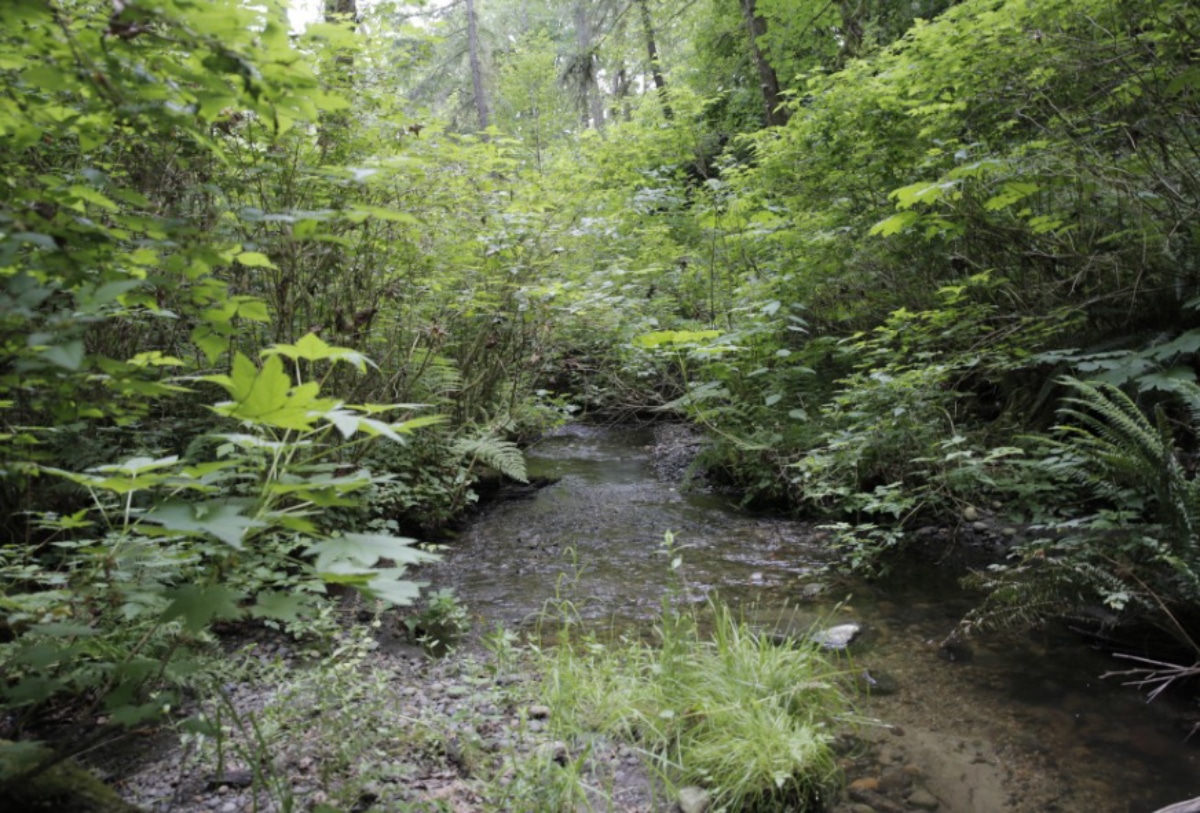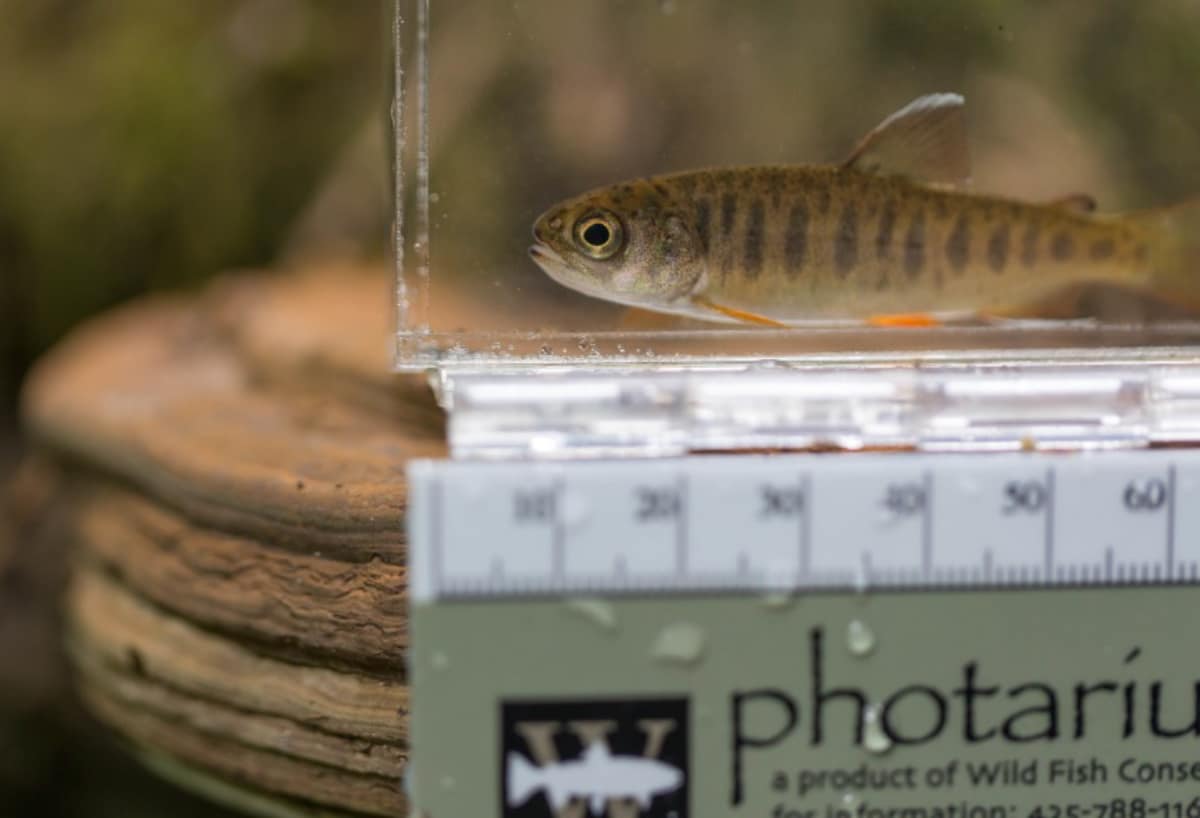Community Community Editorials Environment
Guest column | North Creek: Quality over quantity
An article titled “Idle incubator largely responsible for absent chum run” was posted online by Gig Harbor Now on Jan. 16. The article quotes a source who describes North Creek as a “glorified drainage ditch” and implies the watershed is incapable of supporting fish populations without the help of the remote site hatchery “incubator” at its mouth. I strongly disagree.
In May 2018, Wild Fish Conservancy biologists surveyed North Creek (Donkey Creek) in the City of Gig Harbor, as part of a state-funded stream mapping project. Our biologists found much of the North Creek watershed to be intact with a healthy streamside forest compared to the other streams we surveyed on the Gig Harbor peninsula and elsewhere in central Puget Sound.

North Creek in Gig Harbor. Photo courtesy of the author.
The stream meanders through a forested ravine providing fish habitat including numerous pools, riffles, undercut banks, large woody debris, and spawning gravels. We documented juvenile coho salmon and coastal cutthroat trout in abundance during our field survey. In addition to our field observations, the Washington Department of Fish and Wildlife (WDFW) has documented both chum salmon and Endangered Species Act (ESA)-listed Puget Sound Steelhead within North Creek. The National Marine Fisheries Services identifies the tidal portions of North Creek as critical habitat for ESA-listed Puget Sound Chinook.
Protecting spawning grounds, habitat
The City’s recent purchases of several parcels near the downstream end of North Creek were strategic in that they protect both spawning grounds and rearing habitat critical for the successful reproduction and nurturing of wild salmon and trout. Throughout western Washington, impacts from commercial and residential development have substantially reduced the amount and quality of these stream habitats for native fish species.
Over the past several decades, great effort has been made to protect the remaining fish habitats, and to restore those that have been damaged, in an effort to recover the integrity of Puget Sound lowland streams. State and local governments, Tribes, and non-profits have invested millions of dollars annually to restore fish passage where it has been blocked by undersized culverts. This is the City’s plan at North Creek, where an undersized culvert partially blocks fish from accessing two miles of the watershed.
Protecting and restoring habitat, reducing impacts from hatcheries, responsible harvest management, and removing undersized culverts and other barriers to fish passage, provide a recipe for a healthy watershed. In North Creek, these actions could result in robust wild fish populations at a scale appropriate for this small watershed.

One of many juvenile coho salmon observed in North Creek by Wild Fish Conservancy. Photo courtesy of the Wild Fish Conservancy. Photo courtesy of the Wild Fish Conservancy
Evolving hatchery science
Conversely, an artificial and contrived remote site chum hatchery incubator is not sustainable, as evidenced by the lack of returning hatchery chum following the years the program was mothballed due to virus-infected hatchery eggs. Worse still, the hatchery incubator can negatively impact wild salmon in nearby streams.
Hatchery science has evolved substantially over the past decade, leading to an improved understanding of the genetic and ecological risks that hatchery programs pose to wild salmon populations. WDFW’s own Science Division describe those risks in a recent report, available online: WDFW Hatchery and Fishery Reform Policy Implementation Assessment (2020).
To our knowledge, there are no monitoring data to show the North Creek chum hatchery incubator benefits fisheries; and no data describing the extent to which the program’s hatchery chum salmon stray into other watersheds that support wild chum salmon, like nearby Crescent Creek. As WDFW has reported, when hatchery fish spawn with wild fish, it harms wild fish populations — one of many negative unintended consequences of often well-intentioned hatchery programs.
Sacred streams
The value of streams, even small ones, is much greater than the headcount of the salmon we can wring out of them. Streams like North Creek have a greater purpose than pumping out as many salmon as hatchery technology, tanks, and tubes can enable. Streams are inspiring places with their own extrinsic and intrinsic values; to some, they are sacred. So are the wild fish that live in them.
Streams should be cherished and respected, protected and healed. This conservation ethic aligns well with the best available salmon recovery science: locally-adapted wild fish, not hatchery salmon, are much better equipped to evolve with changing habitat conditions. Though perhaps fewer in number, when given a chance wild fish are sustainable, more resilient, and more likely to survive our changing climate. They represent quality over quantity.
I applaud the City’s recent investments to protect and restore North Creek and strongly encourage the City to let the watershed recover in the coming years absent impacts from the chum hatchery incubator at its inlet. Let’s see what North Creek is capable of following the City’s habitat protection and restoration efforts. Doing so will send an important message to the community – one of temperance; respecting science and nature; and embracing this small watershed for the treasure it is.
Jamie Glasgow is Director of Science at the nonprofit Wild Fish Conservancy. He is also a father and a fisherman, and he worked in a research hatchery while getting his graduate degree in Fisheries at the University of Washington.
